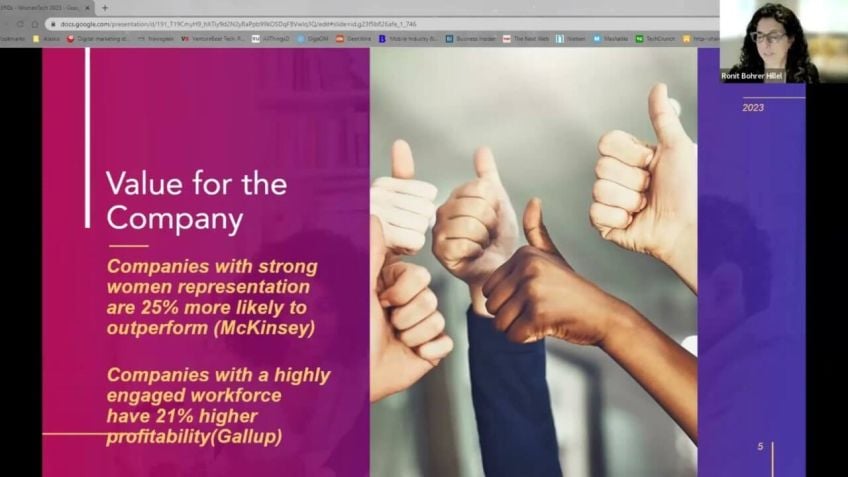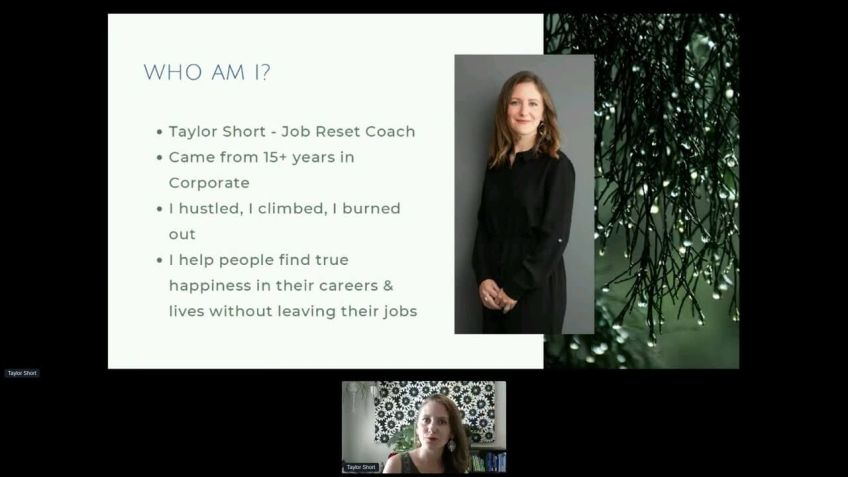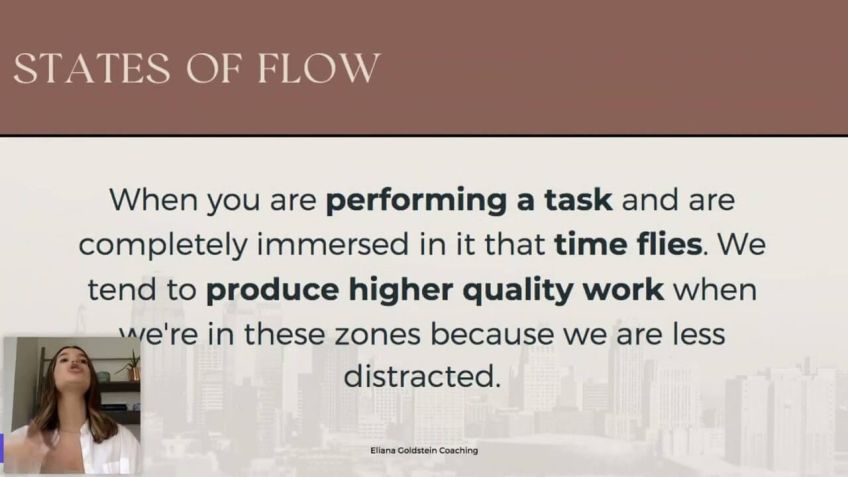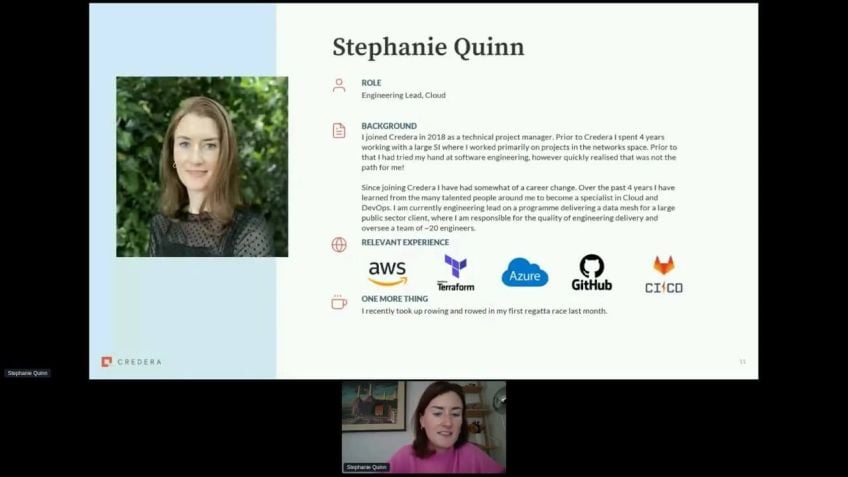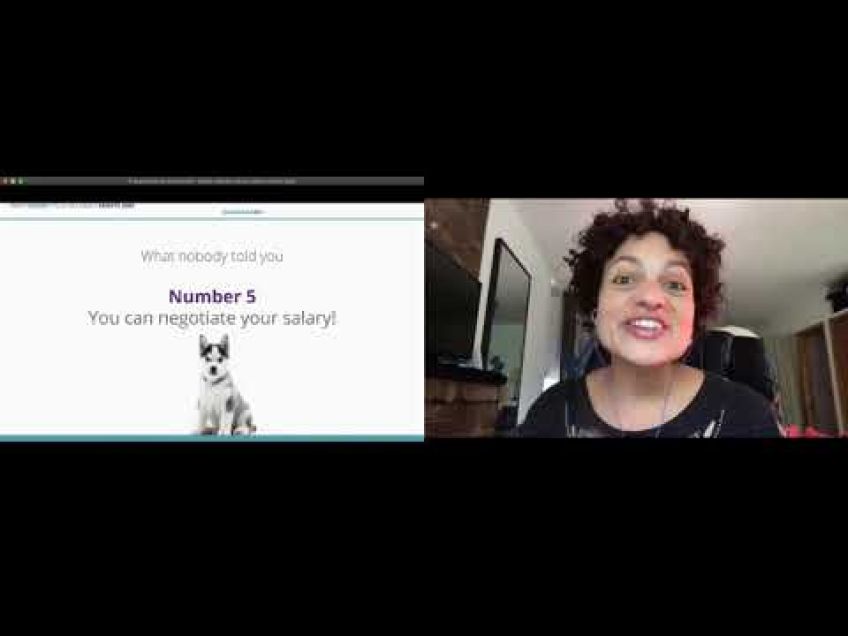Becoming a Tech Executive Recruiter Click Magnet
Monique Montanino
Tech Executive Career CoachHow to Become an Online Click Magnet for Technology Executive Recruiters
Monique Martino, a renowned career coach for technology executives, shares her knowledge on how to command the attention of executive recruiters. We delve into strategies for optimizing your personal brand, developing your executive leadership skills, creating persuasive elevator speeches, and implementing visibility tactics.
Personal Branding: Credibility vs. Visibility
Understanding the distinction between your reputation and your personal brand is the first step on your journey. Your reputation, according to Martino, is everyone's perception of you - it could be positive, negative, or neutral. Your personal brand, on the other hand, is intentional and conveys what you want others to think of you. Consider your reputation as your credibility and your personal brand as your visibility.
There are two key components to defining your personal brand:
- Your career drivers: these elucidate your skills or talents, what motivates you to work, and your long-term career goals.
- Your alignment with the hiring organization's values: it is vital to understand what behaviors the hiring organization rewards.
Mapping Your Skills to Desired Roles
Monique introduces an efficient strategy to align your skills with the requirements of your desired role: go to jobscan.co and match your resume to the job posting. This tactic will offer insights into how well your content is formatted and where your gaps lie.
Crafting an Elevator Speech
An elevator speech must be succinct, engaging, and portray who you are and your value add to the hiring organization. Martino recommends utilizing the CAR (Context, Action, Results) structure for your elevator speech. Below is how it works:
- Context: Provide an overview of your experience.
- Action: Discuss the steps you've taken to reach your current position.
- Results: Highlight the substantial outcomes you have achieved.
Moreover, practicing your speech using a free AI app like Dot AI can improve your tone, cadence, and eye contact, while reducing filler words.
Boosting Your Visibility
Increase your visibility by mapping your stakeholders and honing your LinkedIn profile. Stakeholders could include allies, mentors, and coaches both within and outside your organization. Reach out and engage them - their support can be invaluable.
Your LinkedIn profile is often the first impression recruiters have of you. Ensuring it presents you in the best light is crucial. Here are Monique's tips:
- Professional headline: Include industry-recognized job titles and notable achievements in your headline.
- Professional photo: Invest in a professional headshot for your profile picture.
- Background Photo: Show a glimpse into your personality or values with a relevant background image.
- LinkedIn's Open to Recruiter Option: Utilize this feature to appear higher in recruiter searches.
- Recommendations: having recommendations from previous bosses and colleagues can increase your profile credibility.
Wrapping It Up
With diligent optimization of your personal brand, developing an engaging elevator pitch, mapping your skills to the desired role, and enhancing your visibility through strategic networking and a polished LinkedIn profile, you're ready to become an online click magnet for technology executive recruiters.
If you have any questions or require additional information, feel free to connect with Monique Martino on LinkedIn or reach out via her email - Monique at resume tech guru.
Video Transcription
Hello, my name is Monique Martino and I'm a career coach for technology executives. For those of you that are joining right now, since this session is all about how to become a online click magnet for technology executive recruiters. Would you mind putting in the chat?What job title are you currently pursuing? So just feel the feel free to put it in the chat, the type of job that you're looking to pursue in technology it, project manager. Thanks Liba. Ok. Well, others are joining. Did you know that there are over 400,000 executive recruiters on linkedin? And that 19% of those are focused on technology executives like you in the next 35 minutes. I'm gonna walk through some actionable insights that you can use so that those 79,000 executive recruiter eyeballs are focused on you. First, I'm gonna talk about your personal brand and why it's important that you optimize yours. Then I will walk through executive leadership skills and show you how you can map to the job that you just put in in the chat. I'm gonna walk through a very simple three part elevator speech so that you can respond to the question when a recruiter calls, tell me about yourself, then I'll wrap it up with some visibility tactics that you can use for those 79,000 technology executive recruiters, Jeff Bezos believes that a personal brand is what people talk about you when you're not in the room.
I'm a mentor for women tech network. In my last session with Jenny, I asked her what a personal brand was and she shared with me that it's all about your reputation, your commitment and your follow through. Well, for me, a couple of years ago, I wrote a book called Clicks Tricks and Golden Handcuffs, a five part road map for tech execs to land their next big impact role. And it came out on Amazon and I was proud about it. And one of the things of those five roadmap points is all focus on your personal brand. And I guess the best way to describe it I read in the Harvard Business Review uh a couple of weeks ago, the best way to describe a personal brand is what it's not. So your reputation, everybody has one. It's good, bad or indifferent. A personal brand is actually intentional is what you want people to think about you. So think about your reputation as your credibility and your personal brand is your visibility. There are two parts to uh a personal brand that I'd like to walk you through. First of all, what are your drivers when it comes to your career. And the best way to get at that is to answer these three questions. The first is what are your top three skills or talents that you have for that role that you put in the chat?
The second thing is what motivates you in the morning to get up to go to work. I know for myself, I truly enjoy collaborating with executives that are at the top of their game. And I, I love to, to help them in terms of reaching the next step. And then of course, it doesn't hurt that I get paid for doing that as well. So it's a win, win, win. The third question to ask yourself is a decade from now. What do I want to contribute to the world? I have clients that are into ethical A I, I have clients that are focused on diversity and inclusion. So what are you focused on in terms of in your career that you're working toward that you can be proud of in terms of contributing? The second part of your personal brand has to do with how do your values align with the hiring organizations? And what I mean by that is what are the, if you, if you look at whether it's a promotion internally or if you're going outside internally, it's a little bit easier since you have a annual performance review. And you understand what the organization's values are when it comes to trying to pursue a job outside your corporate bubble as I call it, what you, what you might want to do is for people that you admire there, uh to look at their linkedin profile or read articles about them or listen to their speeches, to find out what are their strengths in terms of?
Are they great public speakers? Are they altruistic? Are they great at leadership or coaching or negotiation? So map in terms of the hiring manager, if indeed that you can figure out who that is, but I would map to those um strengths and see how you map to that as well. The other thing is it's all down to what kind of behaviors does the hiring organization reward? I work for two fortune 200 companies, Sprint and Century Link, which is now lumen. We always had four different objectives that we were working on and that's how I got paid my bonuses and extra compensation. One was drive revenue. The second was operational efficiency. Third was enhanced customer satisfaction and then the fourth was increased employee satisfaction.
So which one of those four buckets or maybe it's all four can you contribute to? And that's what's critical in terms of creating your personal brand. So the first part we talked about is your top talents. What motivates you? And this part is how you align to the hiring organization. I was looking for infographic that showcase executive leadership skills and I found this one for a chief technology officer and what you'll notice here, it's not all about technology. There's a leadership leaf if you will.
There's another one about customer engagement and what I've found with my clients, the higher that they go in their career, it's less about the technical because those are your foundation. It's more about your interpersonal skills such as leadership and customer engagement. Now, one of the things that you can do that is very simple for, for example, like for that, it project manager job, if you go and find three job postings that are the, you know, the job of your dreams that you wanna do and cut and paste one at a time, the key responsibilities and, and uh requirements for that job.
And if you go over to here job scan.co, that is not a Typo, it's an applicant tracking system software app that's free for the first five scans, you upload per job, the requirements and then you upload your resume in a mere five seconds. You get output that provides you not only how well your resume is formatted and the content is put together, but the other thing is it outlines your hard skills, your soft skills and your other skills. And it's a quick and easy way for you to see what your gaps are or I call it business dating language. For example, certain companies when they're talking about dashboard metrics, they call it Kbis, others call it OKRS. You need to use when you're applying for a job, as well as when you're in an interviewing situation, you need to use that hiring organization's language. And this is a very easy way to figure out what that is. The other thing that I recommend is going to linkedin profiles. If you look at the c suite of any company, you can go to each of their profiles. It will typically have their about summary, which talks about the things that they value within the company. Then you can also look at their skills section and it has three types of skills. It has industry knowledge, tools, and technology and interpersonal skills.
And it's a good thing if you're especially in the technology stack, if you go up to the CTO or the CIO or the GM of a particular product, say at Microsoft, it's good to see kind of, you know, the skills that they have and how you align or better yet, how you fill in their gaps, they're hiring you because you add value to the company.
The other thing that you can look at, I call it crowdsource skills, look at your own linkedin profile and you'll see, I call it crowdsource because early on people would endorse you for, for certain skills and you would reach out to people and endorse them as well. It's an easy way to see. It's, it's in rank ordered from the top, the top rank things in chronological order and uh down to the bottom. And it's very easy to see how others perceive you. You can also, you know, ask people to endorse you for certain things that aren't showing up if you're lacking in leadership. And then as well as customer engagement elevator pitch, typically on a phone screen with the executive recruiter, you only have 15 minutes. What I recommend in the 1st 30 seconds is to make a great impression by having an elevator speech. And when I talk about an elevator speech, it's, it's a succinct way to say who you are, what you can do in terms of adding value to the hiring organization. This is the, this is the structure that I use with my clients. I have three components, the I call it the car. It's for contacts, actions and results. The first thing is to place your experience into context and here's mine. I've come full circle. I started off as a corporate brand consultant for Coca Cola General Motors and the US Army today. I'm a certified career coach for technology executives for 18 years. I was a marketing and sales executive at two fortune 200 companies and it allowed me to retire early.
The next part is the actions I took in terms of what I am today. Here's mine, but I got bored in retiring early. There's only so much stand up paddle boarding you can do all day. So I did a pivot. I went back to school and I became a certified career coach. Now, the results are, and this is for my clients. So you can take it for the job that you're looking for as well to offer the strengths that you deliver. In this case to my clients. I reviewed, here's my, I reviewed over 1350 resumes. I've held over 700 executive coaching sessions in the last five years and optimize over 350 linkedin profiles in collaboration with my clients. They've become better interviewers and better networkers and in turn, they have landed the job that they want.
So I can say all that in less than 30 seconds. But before I do that, it's one thing to have, you know, outline it. And here's my process, typically I will outline it for my clients and then I'll tell them to practice, I walk every day for an hour. So I typically walk outside and I'm saying, like I practice this presentation as well and saying it out loud and you can see where you stumble and where you have gaps. And now there's a tool if you go to dot A I, it's a free A I app that is your public speaking coach. You can practice interviewing questions. They actually have a, a list of questions. You can practice your elevator speech, you can practice presentations like I said here and what's great about it? It has a dashboard, it will provide you uh a read out on your tone, your cadence, your eye contact your filler words like uh so, um and also it, it gives you a transcript of what you've done and it's very helpful.
I know it's helped me and I guarantee it will help you as well. So, so here's my, you know, the context of what I did, the actions that I took and the results that I made. And I find that it's very helpful to not only practice when you're walking around or working out or whatever in the app, but also practice with a colleague or a friend or my husband got really tired of me practicing with him, but it's very, it's very helpful so that you can refine it and you can move through so that within 30 seconds when that recruiter calls, this is your answer visibility.
Now, one of the things that I chatted about your reputation is your credibility, but your personal brand is intentional and it's your visibility. This is what there are two things that you can do for your visibility. The first thing is to map stakeholders and what I mean there, if you are, I have a lot of clients that work in Microsoft, they have allies and sponsors. So no matter where they go within the large organization, they have someone that has their back and that is developed intentionally, you need to reach out to people that can help you as a mentor or as a coach, it's not necessarily your boss. It could be most times it's someone that is outside your organization. So say you're, you know, an it project manager, you can fit in a number of different uh business units. But it's helpful to have someone that you've seen that successful and that they can help you out as well and give you some coaching advice. And if you're at a loss in terms of how to do that outside your company. One of the things that I encourage my clients to do, reach out to someone that they view successful at the hiring organization and via linkedin, it's very easy to reach out to that person and ask them for 15 minutes of their time.
In order to do that though, you need to do a fair amount of research on that in individual to see what has made them successful. So share that with them saying you've been successful. And I would like to have, you know, 15 minutes of your time to ask these three questions, you can ask how they became successful, what works well at that company as well as what are some gaps that, you know, potentially that you could fill. But you know, this works with my clients. Do they always respond? Nope, but it's worth reaching out to people to see if that culture in that environment is aligning with your values that we spoke about earlier. The other thing that you can do, as I mentioned, there are 79,000 tech executive recruiters on linkedin is to really focus on your linkedin profile. This is one for Diane Jurgens. She's not a client of mine. I do not know Diane, I was looking for a prototype that I could share with you so that you can get an idea in terms of what recruiters are looking for. And here's what you might not know when a recruiter is on linkedin, there are certain searches that they look for, they look for job titles. This is your headline. They looked at the location that you're in maybe a little bit less.
So now because there's a lot more hybrid and remote going on, they can also see where you went to college, the current company you work for and there is a spot to put in their key skills. So let me walk you through Diane's profile and tell you what I like about it. And it's something that you can clone and own in terms of best practices. First of all, I like her headline here and when I say headlined, she talks about industry known titles. No one's looking for an executive leader as a title, quote unquote. They're looking for VP of engineering director of software development. They're not looking for an executive leader. Our recruiter is not, they're just assuming that you are executive leader, but they're looking for a specific job title.
She talks about being a CTO and a CIO. Then she talks about visibility. She has won awards and she has been recognized for being one of the top, you know, women in technology. In addition, another thing that we learned is one of her values. Remember I talked about early on, she is a stem advocate. So this is a very good headline. The default is typically your current job title and the company you work for. So I know Diane or someone on her behalf helped her change this. The other thing I like is her photo. It's a professional image done by a professional photographer and I think it's critical and here's why if you're looking for a job that pays a quarter of a million dollars up to 4 million annually in compensation, it's well worth spending $250. I've done it and what's great.
They'll come to your location. You can go to their location where you can meet in the middle. I met at the Seattle Art Museum Olympic Sculpture Park for my photo shoot. So it, it's well worth doing that. I've seen a lot of people that have a, a photo with glasses on, people want to see what you look like. In addition, I've seen a lot of photos where someone has their arm wrapped around someone, they look great at a holiday party. I think it's well worth in a professional setting to go for a executive looking photo. Another thing I like about what Diane did is her background photo here when I read her about summary, which she wrote in the first person, which I inquired you to do as well. She talked about her love of travel. So this appears to be somewhere uh in Europe or wherever, where she went to a balloon festival. It shows a little bit of her personality. Another way you can change this up. If you do nothing, it's just a, a drab gray with circles you can do um like on my profile down below, you can change it up. You can go to Un splash.com. It's free and receive free copyright, free photo images related to A I or you know, data science or customer success. And you can also go, I use the Kamba app. It's kamba.com.
You can sign up for free once again and then you can design, have a template for your linkedin um backdrop image here which I did. I'm using my brand colors. I have my book there. You can put text in there, you can play with it. And I think it's well worth having, you know, your personal brand. When you're looking for a job, a lot of people have the company that they work for, which is great. But when you're looking for a job, it should be about you and about what you have to offer a company. So I encourage you to change this out as well. If you want to know how well your, your profile is doing after you've made your changes or even today, what you can do is they have on linkedin. If you go to this link linkedin.com/sales forward, forward slash S si it stands for social selling index, there are four components that I will rate you on compared to others in your industry. It's free once again. And one of the first things it does is it rates you on your personal brand and it's very easy to change uh those items to make you rise up higher. It's based on the number of uh connections that you have.
For example, uh Diane has over uh close to 7000 followers and over 500 connections. And it's very important when a recruiter is looking, you tend to rank higher based on how many connections you have. You also tend to rank higher based on having the skills as well as having those skills endorsed. It's not enough just to have the skills in your skills section. It you'll rank higher if you have more endorsements for it. So I encourage you to do uh that as well. One of the other uh things that you can do for those 79,000 technology executives, if you click on this open to button, I'm sure you've seen on linkedin people that have profiles that have like a green circle around them, like open to network that's one of the different options.
The other option is just open to recruiters and there won't be anything. It will just look how my profile looks here and what's great about it, it will suppress the hiring companies uh from recruiters or hr department or talent people knowing that you're looking for a job, you have the opportunity to put in five industry recognized job titles and, and what's great about it is a pull down menu.
So it's kind of a goof proof if you will, you also have the opportunity to put in there, whether you wanna work in the office, you wanna work at home or you want a hybrid situation and then you just click save and that will make you show up higher in a recruiter search as well.
And then last but not least, I think it also helps that if you have people recommend you as well, I say to my clients have someone that was a former boss of you, yours recommend you a colleague. And then you know, someone that has worked for you as well because that way it's kind of a, a virtual, you know, recommendation that recruiters can see that you've had people that will, you know, share perspective in terms of, of what's going on. So those are the things that I share with my clients. And so to wrap this up, you have to focus on your personal brand and optimize that, make sure that you have an elevator speech that's between, you know, 30 to 60 seconds. Map your executive skills to that job and you have an easy way of doing that using jobs scan.co and then as far as visibility, what I highly recommend is spending time on your linkedin profile, there's a number of tutor tutorials out there that can help you. Uh Yeah, optimize what you have. So with that, I went through a bunch of information. If you have additional questions, you can reach out to me at Monique at resume tech guru or connect with me on linkedin and I will open it up to any questions that anybody has. It doesn't appear like we have many questions.
So with that, I really wanna thank you um for hanging out with me today and I wish you the best in becoming a online click magnet.


